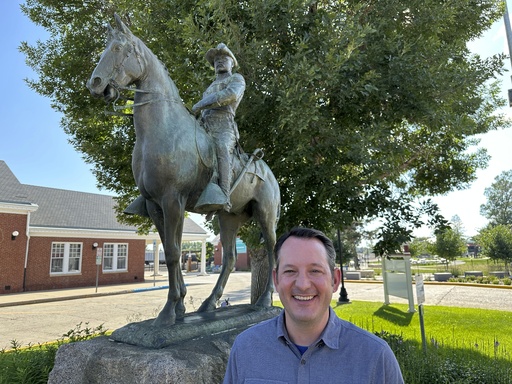BISMARCK, N.D. (AP) — Supporters of the Theodore Roosevelt Presidential Library in North Dakota are cheering new federal legislation to help build the library and to showcase artifacts of the 26th president, who as a young man hunted and ranched in the state during its territorial days.
Last week, North Dakota’s three-member, all-Republican congressional delegation announced the bill to “authorize funding for the Library’s continued construction and go towards ensuring the preservation of President Roosevelt’s history and legacy.” The bill’s Interior Department grant is for $50 million of one-time money, most of which “will go into creating the museum spaces in our facility,” said Matt Briney, the library’s chief communications officer.
The bill also enables and directs federal agencies to work with the library’s organizers to feature Roosevelt items in the library’s museum, he said.
In 2019, North Dakota’s Republican-controlled Legislature approved a $50 million operations endowment for the library, available after its organizers raised $100 million in private donations for construction. That goal was met in late 2020.
The project has raised $240 million in private donations, and complete construction costs $333 million, Briney said. Covering the library’s construction costs has not been an issue, he said.
Construction is underway near Medora, in the rugged, colorful Badlands where the young future president briefly roamed in the 1880s. Organizers are planning for a grand opening of the library on July 4, 2026, the United States’ 250th anniversary of independence.
In a statement, the congressional delegation hailed the bill as “a wise investment in our nation’s historical preservation.” In the same press release, the bill drew praise from descendant Theodore “Ted” Roosevelt V and North Dakota Gov. Doug Burgum, who championed the library to the 2019 Legislature.
The bill would require a two-thirds match from state funds or non-federal sources, and it would prohibit the federal money from going toward the library’s maintenance or operations.
Planned exhibits include a chronological view of Roosevelt’s life, such as galleries of his early life, time in the Badlands, travels to the Amazon and his presidency, Briney said.
The 2023 Legislature approved a $70 million line of credit for the library through the state-owned Bank of North Dakota, which Briney said library planners have not tapped.
That line of credit drew scrutiny last year from Republican state Rep. Jim Kasper, who called it a “$70 million slush fund” that could leave taxpayers on the hook. Library CEO Ed O’Keefe has said the line of credit was intended as backstop to help ensure construction could begin.
In an interview, Kasper called the library, which he supported, “a beautiful thing for the state of North Dakota … but I want private funds raised to pay for it.”
“If there’s going to be taxpayers’ dollars that are used, then I’d rather have federal dollars used than taxpayers of North Dakota dollars,” Kasper said. “Obviously there’s still taxpayer dollars. But I really don’t support any taxpayer dollars being used for the project, whether they’re state or federal.”
Other presidential libraries have been built with private donations or non-federal money. Some have received funds for construction and development from state and local governments and universities, then have been transferred to the federal government and run by the National Archives and Records Administration through that agency’s budget, according to the National Archives’ website.
The Theodore Roosevelt Presidential Library will always be privately held, said Briney, who called the legislation’s money “not necessarily uncommon.”
Home US News North Dakota Federal money eyed for Theodore Roosevelt Presidential Library in North Dakota
